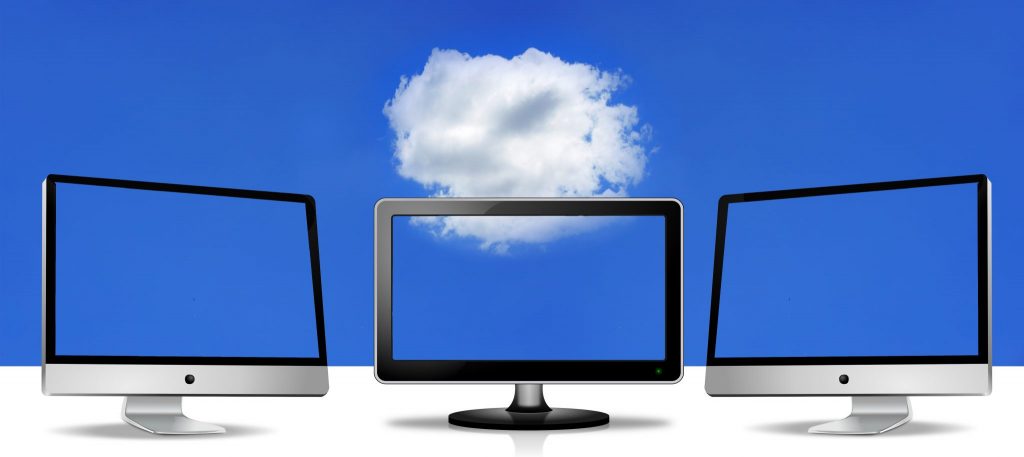This is the story of noticing when things started to change from on-premises to cloud and when clients became dissatisfied with the status quo. Many MSPs missed the memo and thought that the cloud would fail to thrive or that it wouldn’t involve them. They couldn’t have been more wrong. I own an MSP and I’ve seen these changes first hand. The only way you survive is by adopting change as a business strategy.
Change happened
Let’s be honest here. Not much changed in the MSP world for 15 years. Sure, operating systems iterated to new versions, some new features crept in, but MSPs just kept on offering the same services and didn’t implement a lot of new features, either. We kept things running, answered questions from users, and performed migrations to the next version. What we do as MSPs is pretty dull stuff when you stop to think about it.
But as MSPs were going through the drudgery of daily tasks, change occurred around them. The action was happening on the mobile device front. We saw users all shift from flip-phone to smartphone over the course of about 24 months. Then the iPads appeared and businesses wanted them to function like laptops. We told them that that’s not how they are designed. They are supposed to consume content not create it. But mostly they didn’t listen and were shortly frustrated. That frustration, though, has been the driver of all of the technology change that we’re now fully immersed within.
An MSP transitions to the cloud accidentally

Around this same time, which I put at 2008, my own MSP, Harbor Computer Service, had a disaster. A semi-truck hit the freeway overpass, created a massive fire that dropped the overpass onto the freeway, and melted the road. Until that moment we didn’t know that our Internet and electricity home runs were both held within that overpass. Fortunately for us, we had recently deployed Microsoft’s BPOS, the predecessor to Office 365, for ourselves. This meant that SharePoint and email no longer resided on our local server but instead were in the cloud. We were also using SkyDrive, the predecessor to OneDrive, to store files so we had access to them while at client offices. Beginning in 2002, we were early adopters of QuickBooks Online. In fact, our customer number was 12 until they finally changed it to something more grandiose sounding. Of course, we had a lot of legacy data on our server but once it went down and we continued to work I made the decision to never go back. We’ve been fully in the cloud ever since and 2008 is when we, now confident that this could work, began to migrate some clients into the cloud.
It’s now 2018 and when we talk to clients we are able to tell them that our company has been in the cloud for 10 years and we’ve been helping clients make that transition for a decade. We’re experienced at this and likely the most experienced firm they are going to encounter. It’s a competitive advantage, and competitive advantages don’t happen by accident.
Early adopters
This fortune of circumstance occurred by accident, but it didn’t happen by accident. Ours happened by culture. We are early adopters. We are early adopters of everything. It’s in my blood and bones to love technology so much that I force my company and my employees to live on the bleeding edge at all times. I consider it a significant part of my job as the business owner to lead. We are not cautious with our own technology. We boldly go where our clients might go in the future. And where we might take them in the future.
We don’t just “eat our own dog food,” we find the next big thing, try it, and train ourselves on it. We toss a lot of things aside as not ready for primetime, doesn’t provide enough integration, support is lousy, feature-set is lacking, but we try them all. I do get a lot of pushback from my own staff sometimes as we frequently find ourselves with data in various locations with multiple ways of accomplishing the same thing. But eventually, something grabs us, coalesces with what we are hearing from our clients, and becomes part of our repertoire of recommendations.
The big red flag

Most of this story takes place around 2008. This was the point when MSPs should have sat up and read the writing on the wall. Their clients and the users were inventing solutions to problems they had (those iPads) and that never bodes well for the person maintaining the status quo. You become the enemy of progress and the source of frustration. Today we are coming into businesses as their new IT firm because the current firm is holding fast to the status quo. We often speak to them during the transition period and we now know what they are going to say.
Why do clients leave their MSP? The old firm will say that the client doesn’t listen to them, that they are cheap, and that they don’t like change. The users will never go for what we’ve proposed. It is destined to fail. For us, we also know what our new client is going to tell us about the previous firm. They are going to tell us that they don’t listen, don’t like change, and aren’t able to help them with their needs beyond just maintaining what they’ve installed. If they have Office 365, then they are only using email, OneDrive and maybe Skype or SharePoint. The client knows enough to see that they are standing in front of a banquet viewing everything that’s available in technology today but there’s a glass wall between them and it and they are starving. And the reason for this circumstance is the previous firm. That is why they let them go and come to us — or a similar MSP that has adopted change as a business strategy.
Back to change as a business strategy
How do you avoid this fate? How do you adopt change as a business strategy? I do it by loving what I do and doing what I love. I live in the future but don’t neglect the now. But you also have to have some constants. Harbor is a Microsoft shop staffed by Microsoft people. I made the decision many years ago to throw our fortunes in with Microsoft. I did this because I like their unwavering commitment to business. I too am in business for businesses. While they mostly focus on enterprise and I focus on small business, we are both focusing on business. Microsoft also puts out — for better and for worse — the greatest volume of technical documentation and I believe that they have a genuine desire to also appeal to small business. It’s not a perfect relationship. I have to interpret what they are saying to scale down the solutions to the right size for my clients and I have to pay attention to ferret out what direction they are taking next. It’s a real firehose of information and opportunity but it’s the one constant that we have.
We have actually more than one constant in our business. We have four. Here they are:
- We have always been and we always be a Microsoft shop.
- We have always been and we always be focused on small business.
- We will always adopt new technology.
- We will always be a business that makes money by providing services.
Within that framework of constants leaves a lot of room for change. We’re always looking for new technology that might solve a problem for our clients, technology that might turn into a new service offering or that scales in price and not feature-set to small businesses and that integrates well with Microsoft. When a new technology meets these criteria, then we go to market with it.
Being early to market has been a critical component of our success but it isn’t limited to new technology, nor to the cloud. It’s everything.
Yes, everything
By everything, I mean everything. When our clients heard bad things about Windows 8 we told them not to worry. We can show you in five minutes how to navigate around and you’ll be fine. When our clients heard bad things about Windows 10, we told them not to worry. We’d been running it on our laptops, which are our daily work devices, for nine months before it was released to the general public. Today we are saying that we aren’t going to install antivirus software anymore. That’s a big change. It’s been a safety blanket that they thought they understood. But we know today’s threats are different and so today’s solutions have to be different too. We are the agents of change for our clients and it takes a big commitment on our end to make sure that we’re ready.
Doing this allows us to provide new technology for our clients and give them the confidence that we’re ready to support their use of it. I just said something very important here. Here it is again: One tenant of driving change is that you are not supporting the technology, you are supporting your clients’ use of the technology. Having a culture of change and knowing the technology isn’t enough. You also need to understand how your client is going to use this new technology.
Getting business-y
Our clients use technology differently than we do. This is because we are in different businesses. We are an MSP. They are manufactures, engineers, architects, distributors, health-care professionals, legal pros, and financial wizards and are in any industry other than our own. It’s our job to understand their business, what their staff does, and understand the technology well enough to shape it to their needs. We also need the confidence to bring new ideas to them that might cause them to change the way they work, for the better.
Not every change we bring to them will be adopted but some will and eventually enough will be that they will see the impact on their business. They will come to trust that we will bring them new ideas, new technology, and new ways of doing old things. They will see enough successes to take the risk with us of trying the new thing and together we will enjoy seeing their business succeed as a result. When that happens, then we are both succeeding through the adoption of change as a business strategy.
Featured image: Pixabay



